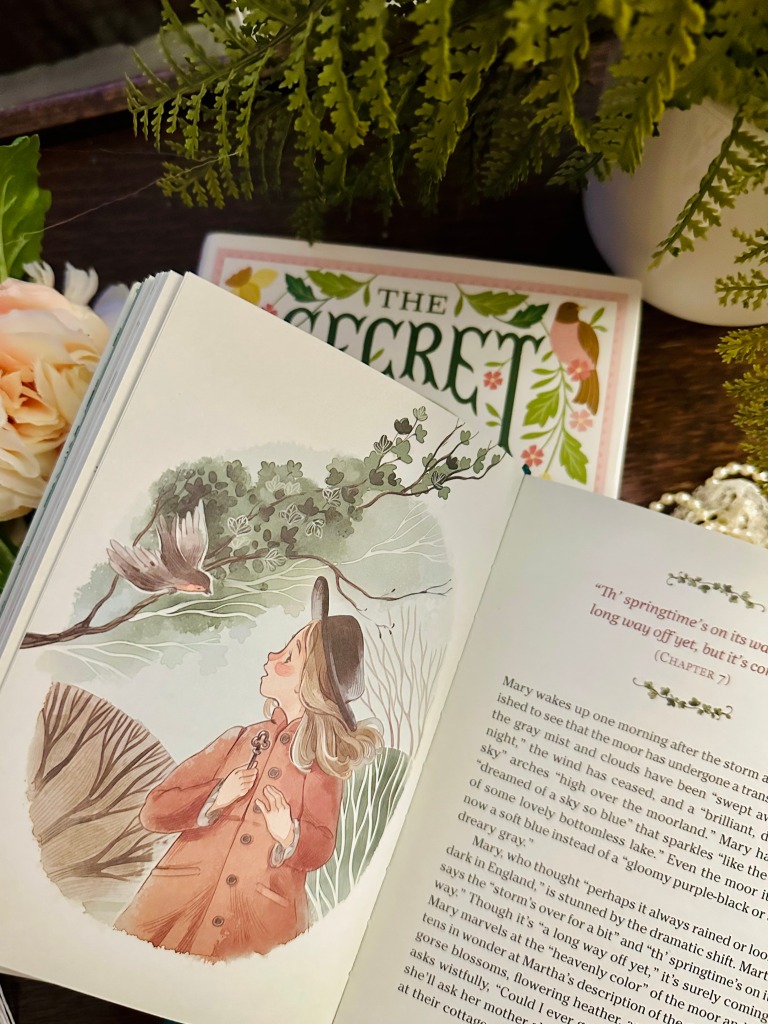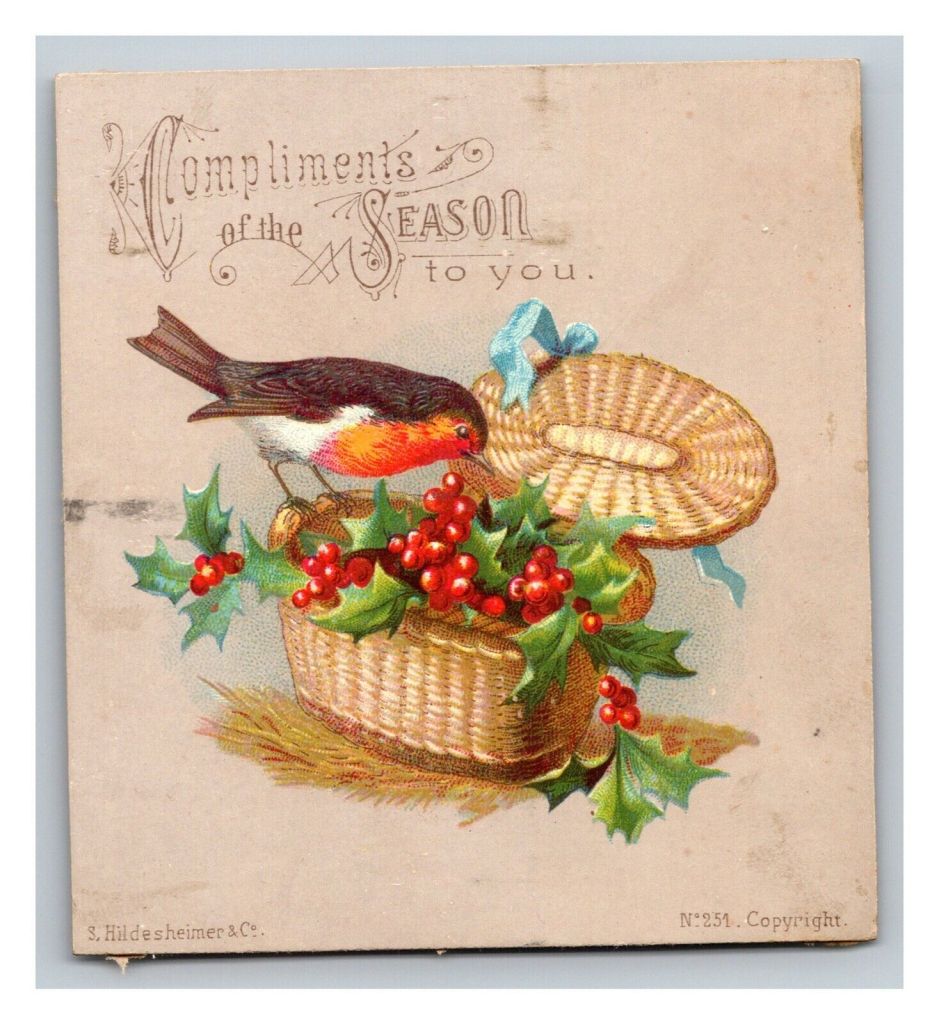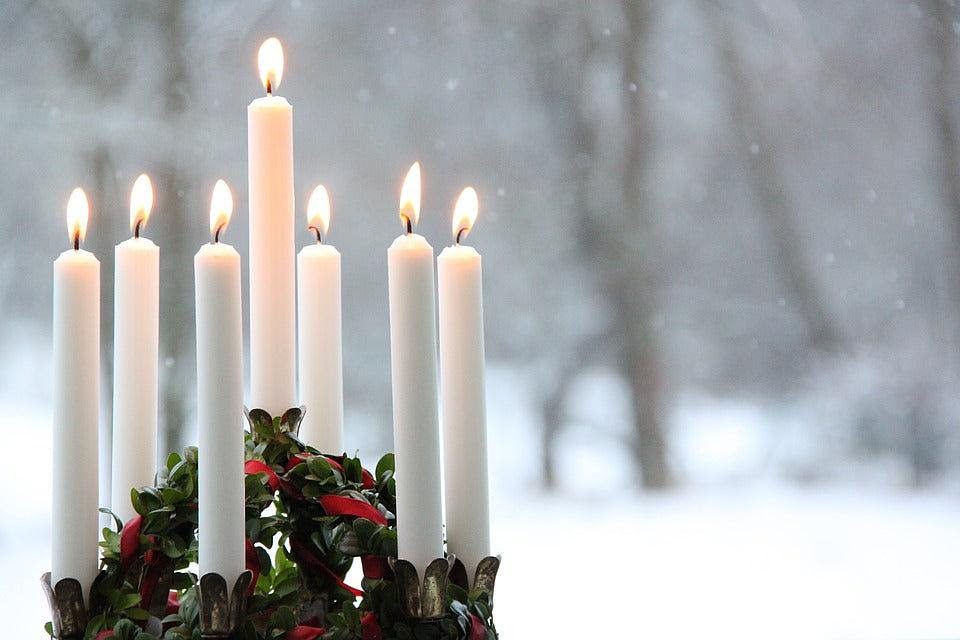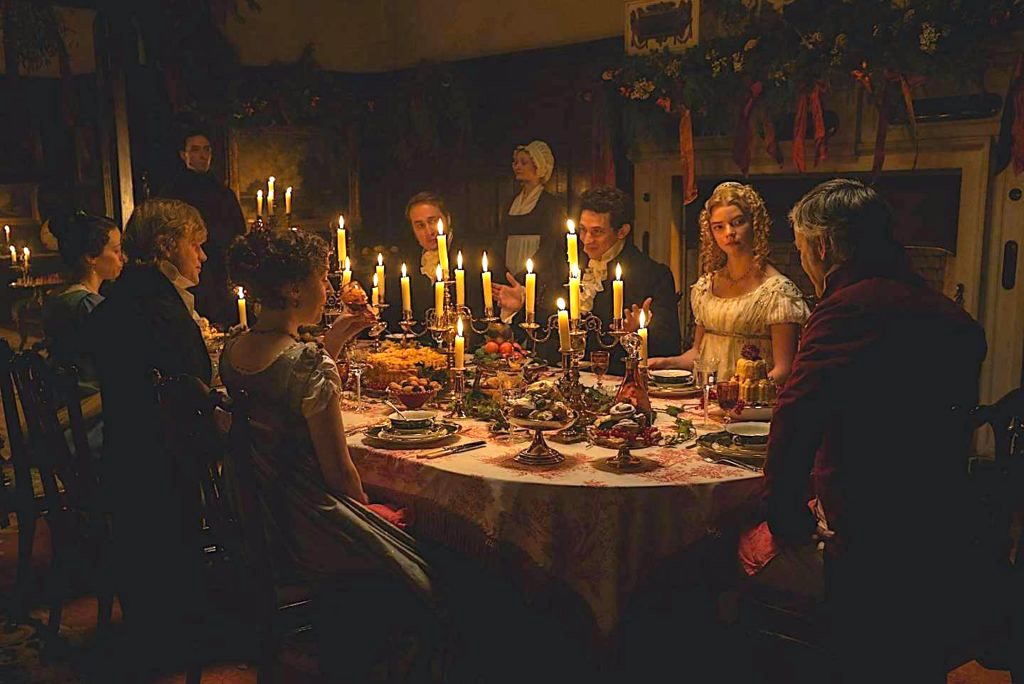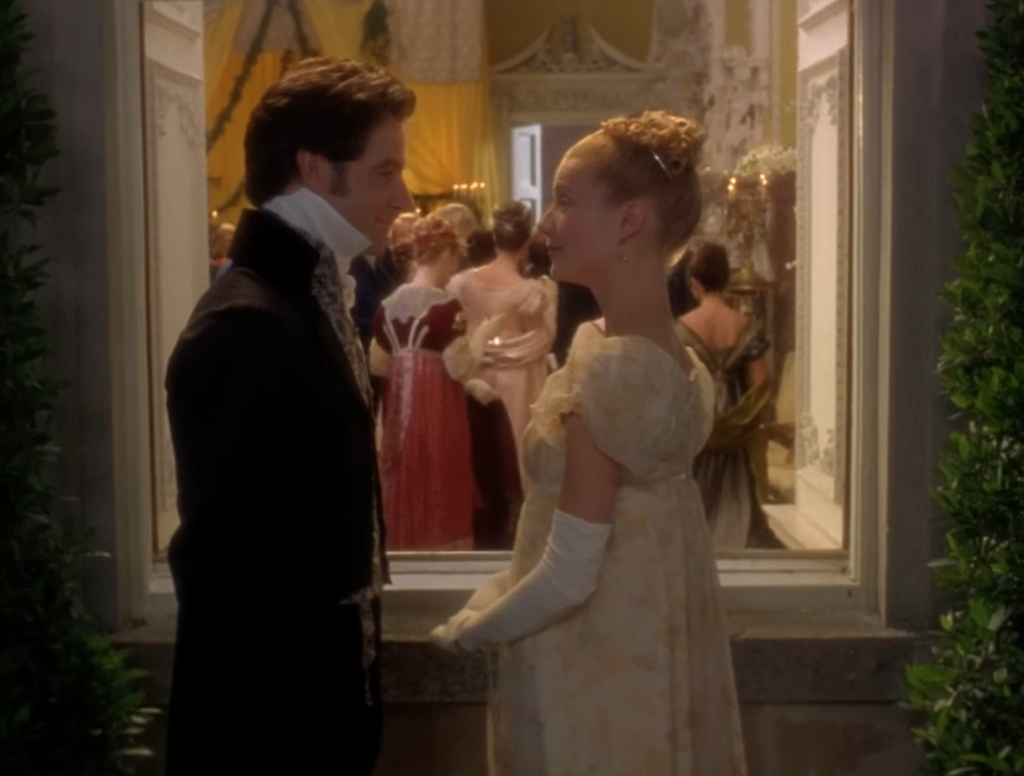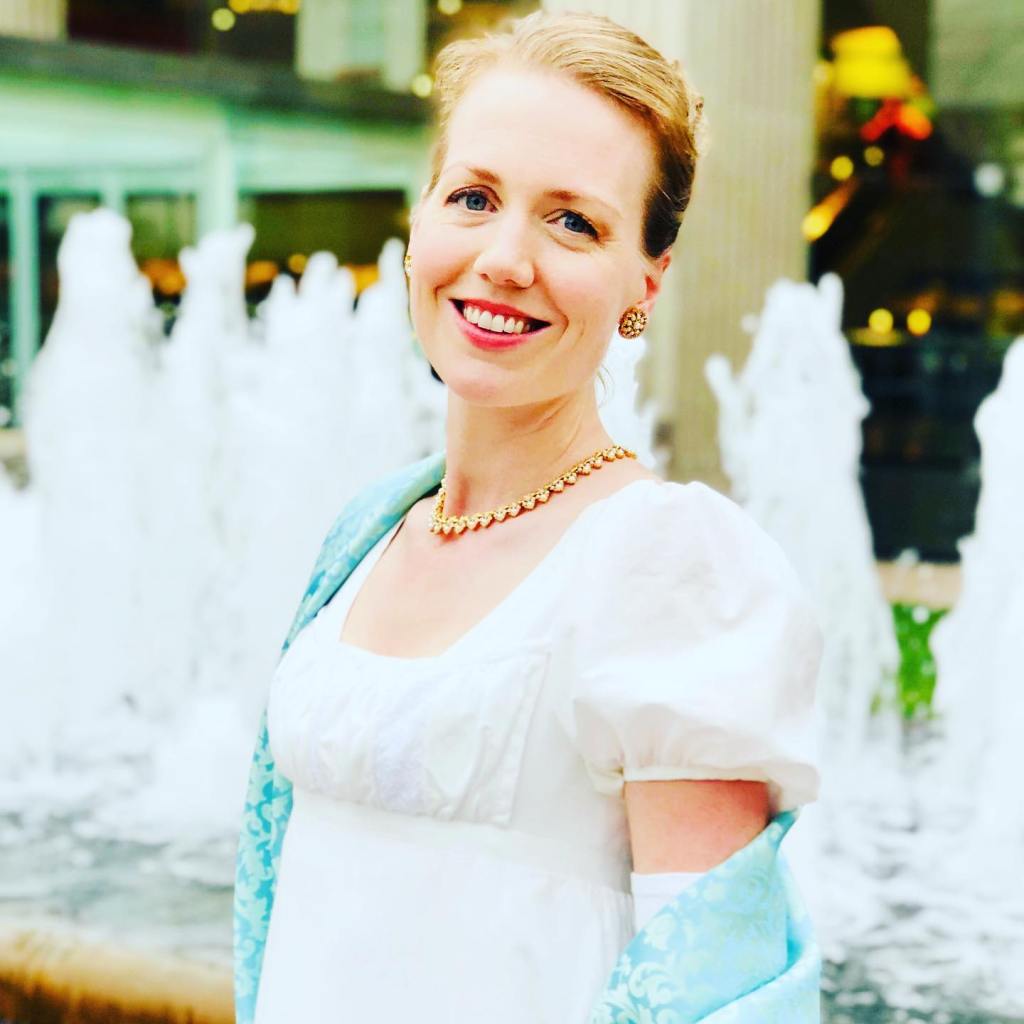“If I,” said Mr. Collins, “were so fortunate as to be able to sing, I should have great pleasure, I am sure, in obliging the company with an air; for I consider music as a very innocent diversion, and perfectly compatible with the profession of a clergyman.”–Pride and Prejudice
“In the evening we had the Psalms and Lessons, and a sermon at home”–Jane Austen, Letters, Oct. 24-25, 1808 [“Lessons” were the Bible readings for the day, from the Book of Common Prayer, which also prescribed the Psalms to read or sing for that day.]
When I asked some Facebook friends what gave them joy, the most popular response was “Singing!” There’s nothing like singing to raise your spirits. Even “singing the blues” can be cathartic, getting sadness out and making room for joy. (Of course, in Sense and Sensibility, Marianne Dashwood uses music and singing to increase her sadness, rather than relieve it.)
Early Carols
For centuries people have sung Christmas carols to express their joy at Christmastime. I’ve come across three books of Christmas carols published in the years following Austen’s death (1822, 1833, 1861; details in sources below). Almost all the carols in them were known and sung during Austen’s lifetime. Many are secular, about the holly and ivy used to decorate homes for Christmas or the boar’s head that began ancient Christmas feasts. Some are specifically for wassailing. Wassailing was similar to modern caroling, but wassailers carried with them a large bowl of “wassail,” a mixture of apple cider, spices, sugar, and alcoholic beverages. Wassailers sang to each house they visited, wished them prosperity, and drank to their health; the hosts might give them money, Christmas food, or drinks.
Joy is mentioned repeatedly in these songs. A fourteenth century carol, “The Seven Joys,” describes seven joys that Mary experienced; the last one is “To see her own Son Jesus To wear the crown of heaven.” An early seventeenth-century carol begins, “So now is come our joyful’st [most joyful] feast; Let every man be jolly.”
Many tell the Christmas story, or parts of it. Some also tell the story of Adam and Eve, their creation and their fall into sin. Others include the death and resurrection of Christ. Some older carols narrate legends. In “The Cherry-Tree Carol” a cherry tree bows down to Mary, proving her innocence to the doubting Joseph.
Early carols we still sing include “God Rest Ye Merry Gentlemen,” “The First Noel” (which in some versions was sung “Oh well” rather than “Noel”!), and “I Saw Three Ships Come Sailing In.”
Carols at Home and Charity for Carolers
Would Jane Austen and her family have heard and sung Christmas carols? Many were available as published broadsheets (single pages) or known orally. Since the Austen family loved music and singing, it’s quite possible that they sang carols at home during Christmas celebrations. Jane mentions Christmas gatherings in her novels and letters, and singing was probably part of those celebrations.
Would she have heard carolers going door to door? Also likely. Two country parsons of the time, one in eastern England and the other in the West, kept journals that have survived. Since Austen’s father was also a country parson, her family’s experiences may have been similar to theirs.
Parson James Woodforde of Norfolk mentions, on Christmas Eve of 1764, that the church’s Singers came to him and sang “a Christmas Carol and an Anthem”; he gives them “cyder as usual” and a gift of money. They also sang to him in 1768 and 1769; it seems to have been a regular practice. In 1781 (when Austen would have been six years old), Woodforde gave money to “Spragg’s lame son for a Christmas carol.” Peter Parley, in his 1838 description of Christmas customs, says groups of ragged children went from door to door singing for alms. Giving money to carolers was part of Woodforde’s extensive Christmas charities; he gave money to more than fifty poor people every St. Thomas’ Day (Dec. 21), and fed Christmas dinner to a number of “poor old men” every Christmas Day.
Some years later, Parson William Holland of Somerset also gave charity at Christmastime, including dinners for the Sunday School children (poor children learning reading and religion at the church each Sunday). In 1800 Holland says the poor came “AChristmassing,” which he translates as begging. It seems likely their house to house visits included singing carols. His church Singers came and serenaded his family at the parsonage every Christmas morning, sometimes as early as 5 AM (in 1799) or even 3 AM (in 1809)! Parley calls groups of church musicians, who wandered about playing and singing during the night on Christmas Eve, “the waits.” He says the custom came from earlier times when groups of watchmen wandered the streets at night.
Austen’s family also probably heard and entertained Christmas singers, and gave alms to them and other poor people at Christmas.

“While Shepherds Watched Their Flocks”
In 1792 and 1793, Woodforde says the church Singers sang a Christmas Anthem during the service. In other years he also mentions singing in Christmas services. What would have been sung in Austen’s country churches at Christmas? Most likely, the carol, “While Shepherds Watched Their Flocks by Night.”
In the 1700s in Anglican worship, most congregations only sang Psalms from the Bible, not hymns. In fact, in many small churches there was no singing at all; the Psalms were just read. However, some had groups of “Singers,” like those in Woodforde and Holland’s churches, sometimes with musical instruments. (Holland’s congregation took up money to buy their Singers instruments.) The congregation might sing along with the Singers, but more often just listened.
The Singers generally sang from Tate and Brady’s New Version of the Psalms of David, which was a book of “metrical Psalms.” These are Psalms rewritten in a regular poetic form so they could be sung with standard tunes. In 1700, a Supplement was added which included a few hymns. The only Christmas hymn was “While Shepherds Watched Their Flocks by Night,” which is paraphrased from Luke 2:8-14. It was the only officially approved Christmas carol for churches in the eighteenth century. The words were as we sing them today. It could be sung to any tune in “common meter” (churches had books of tunes with certain meters, patterns of syllables, stress, and rhyme). But it likely was commonly sung to the tune still used in Britain today. (The tune popularly used in the U.S. now is from 1821.)
“Joy to the World”
Anglican country churches in the 1700s were mainly singing Psalms. However, the Dissenters (those outside the Church of England) and the Methodists wrote and sang many hymns during this time, including some Christmas favorites. Isaac Watts, a Dissenter, is considered the Father of English Hymnody. He believed that singing Psalms was not enough, because the Psalms did not express the New Testament experience and the gospel of Christ, or the congregation’s thoughts and feelings as Christians. He rewrote many of the Psalms to express those ideas.
“Joy to the World,” published by Watts in The Psalms of David Imitated in the Language of the New Testament in 1719, was a rewrite of Psalm 98, but it also includes phrases from other Bible verses. Psalm 98:4 (King James Version) says, “Make a joyful noise unto the Lord, all the earth: make a loud noise, and rejoice, and sing praise.” Watts wrote this as “Joy to the World.” Psalm 98:9 says the Lord is coming to judge the earth, which Watts adapted to “The Lord is come; let earth receive her king!” The line “Heaven and nature sing” is from Psalm 96:11, “Let the heavens rejoice, and let the earth be glad.” The third verse of the carol says, “No more let Sins and Sorrows grow, Nor Thorns infest the Ground: He comes to make his Blessings flow Far as the Curse is found.” This is adapted from Genesis 3:17-18, in which God tells Adam that the ground is cursed because of his sin, so Adam will eat from it in sorrow, and it will bring forth thorns and thistles.
As Watts’ songs had been spreading for some years, the Austens may well have sung this one in their home, if not at church. The tune we sing today had not yet been created; it was adapted from Handel in the 1830s.

“Hark the Herald Angels Sing”
“Hark the Herald Angels Sing” is a Methodist hymn that might also have been sung by the Austens, at home or possibly at church. The Methodists attempted to revive the Church of England, but eventually, on John Wesley’s death, separated and became Dissenters. However Charles Wesley, John’s brother, who wrote thousands of hymns, was strongly committed to the Church of England. His “Hymn for Christmas-Day” was published in Hymns and Sacred Poems in 1739.
It began, “Hark how all the welkin rings!” “Welkin” was an archaic word for the heavens. George Whitefield, another famous Methodist preacher, changed this line and other parts of the song in a collection of hymns he published in 1753. It became “Hark the Herald Angels Sing.” The music we sing it to now was added in the mid-1800s. At that time, Wesley’s four-line stanzas were combined to make our eight-line verses and the chorus was added.
All of these Christmas carols express joy:
“Glad tidings of great joy I bring To you and all mankind.” (“While Shepherds Watched Their Flocks”)
“Joy to the world! The Lord is come. Let earth receive her king!” (“Joy to the World”)
“Joyful all ye nations rise; Join the triumph of the skies!” (“Hark the Herald Angels Sing”)
Wishing you all much joy, whatever holidays you celebrate!
What is your favorite Christmas carol, or other song, that brings you joy?
Brenda S. Cox writes for Jane Austen’s World and for Faith, Science, Joy, and Jane Austen, where this post first appeared. Her recent book, Fashionable Goodness: Christianity in Jane Austen’s England, includes a chapter on “Psalms and Hymns: Singing in Church, Or Not.”
Sources
A Jane Austen Christmas: Regency Christmas Traditions, by Maria Grace
The Diary of a Country Parson 1758-1802, James Woodforde, edited by John Beresford
Paupers & Pig Killers: The Diary of William Holland, A Somerset Parson, 1799-1818, edited by Jack Ayres
Tales About Christmas, by Peter Parley, 1838
“While Shepherds Watched Their Flocks”
Eighteenth-Century Books introducing new Christmas Carols
The Psalms of David Imitated in the Language of the New Testament, Isaac Watts, 1719
Hymns and Sacred Poems by John and Charles Wesley, 4th edition, 1743
A New Version of the Psalms of David, Tate and Brady, 1733. “While Shepherds Watched” on p. 58-59 in the supplement at end.
Nineteenth-Century Christmas Carol Collections
Christmas Carols, 1833
A Garland of Christmas Carols, 1861 and Review
You can check out the history of your favorite carols at The Hymns and Carols of Christmas; scroll down to the alphabetical index.







